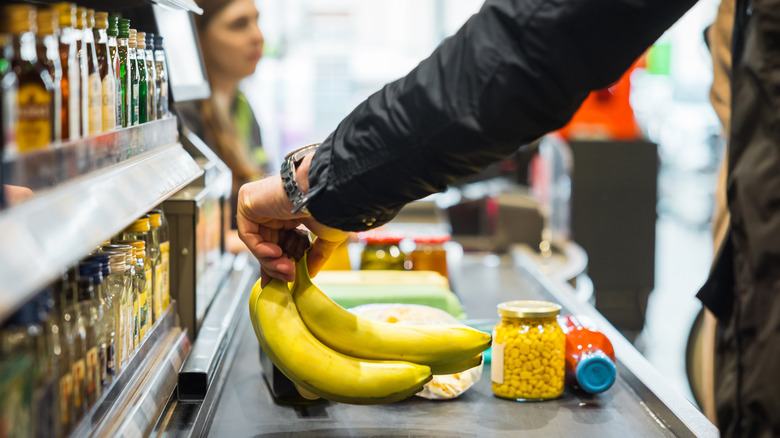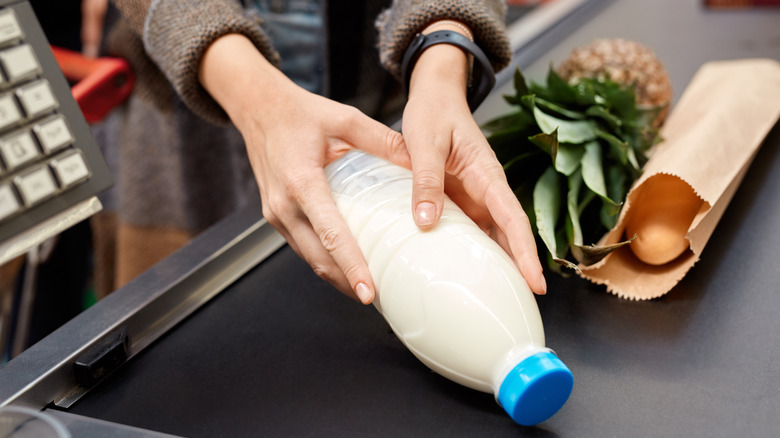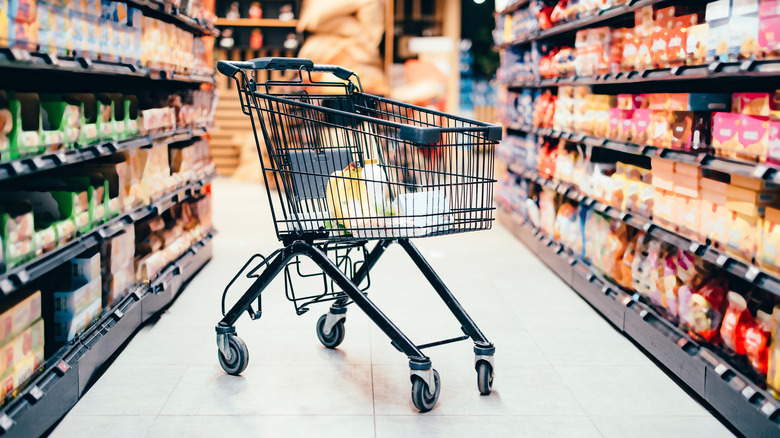The Grocery Store Conveyor Etiquette You Need To Abide By
Just as grocery self-checkout etiquette governs the express lanes at your local store, cashier lanes have their own set of unspoken rules that shoppers should follow. One of these concerns the conveyor belt used to move your groceries forward for scanning and bagging. Though you may think you're saving time by unloading your cart and placing items on the belt while the person in front of you is also still unloading, your groceries can quickly crowd theirs out. This leaves them with little to no space on the belt for the remainder of their goods, and it also amplifies the pressure we already feel when trying to check out in a timely manner.
To make sure the shopper in front of you has plenty of space for their groceries on the conveyor belt, let them finish unloading before you begin. You should also leave enough room between their cart and yours for them to be able to reach all their items.
As you begin to unload your groceries, either you or the shopper ahead of you should place a divider on the belt at a diagonal angle to clearly separate your purchases, which triggers the belt's sensor and also makes the cashier's job easier. After all, there's nothing more annoying to staff than having items get shuffled around on the belt, and then a customer winds up accidentally paying for someone else's stash.
Be mindful of how you place your items on the conveyor belt
When unloading your groceries onto the checkout conveyor belt, you should also consider the order in which you place everything. For instance, if you unload your large and/or heavy items first, you can put them back in the cart first, creating a base for lighter and more delicate items. Likewise, you should try to group items the way you'd like them to be bagged together — such as frozen goods, fruits and veggies, soap and personal hygiene, etc. Arranging your groceries on the belt in pre-sorted groups helps speed along the process, and helps you unload them more quickly and easily at home.
On a similar note, you should try to keep the belt free of spills. Countless other shoppers place their items on the same conveyor, and they don't want to set their groceries in a sticky syrup spill or leaked raw meat juice any more than you do. Even if you don't see visible grime, consider the belt a germ fest and keep unpackaged items like produce from touching it directly by using produce bags. In turn, this will also help you achieve a cleaner refrigerator at home.
Avoid taking unwanted items to checkout
It's understandable to have a last-second change of heart about a package of cookies, or to realize a little too late that a can of green beans is dented. As shoppers, we should always do our best to avoid taking these items to checkout — if you decide you don't want something in the middle of shopping, you should spare staff the unnecessary work of restocking and just put the item back where you found it. However, if you're already in the checkout lane, only to decide you no longer wish to purchase an item, do not ditch it on any random shelf near you. Instead, turn it over to the cashier so they can handle it appropriately.
It's important to note that this method is best for shelf-stable foods. Giving items to the cashier should only be a last resort for items like fresh perishable groceries, frozen goods, and other temperature-sensitive products, as they've already been sitting out in your cart and will likely sit out even longer before they can be returned to the shelf. In many cases, the item will spoil in the meantime, leaving the store little choice but to throw it away and lose money. For this reason, try to grab perishable groceries last, and be sure you actually want them before placing them in your cart.



